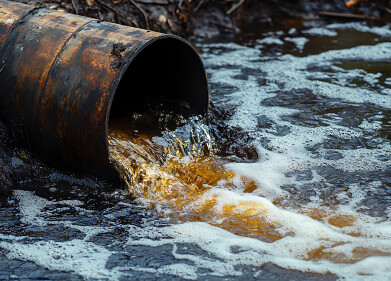PFAS analysis
New research claims most PFAS pollution comes from ocean spray
Apr 26 2024
A significant body of research from the Department of Environmental Science at Stockholm University has unveiled startling insights into the behaviour of toxic chemicals known as per- and polyfluoroalkyl substances (PFAS), often termed "forever chemicals" due to their persistence in the environment. This study, published in the journal Science Advances, points to ocean waves as a major contributor to PFAS pollution, surpassing traditional sources like industrial emissions.
PFAS, which have been used in various industries for their resistance to water, stains, and heat, do not degrade naturally in the environment. These chemicals have made their way from household products to rivers and oceans, where they have been assumed to dilute harmlessly. However, the latest findings challenge this assumption, showing that PFAS are not only remaining in the ocean but are being re-emitted into the atmosphere through sea spray at alarming rates.
The study conducted field experiments across the Atlantic Ocean aboard the Royal Research Ship Discovery. Using a specialized sea spray simulator, researchers observed that PFAS levels in airborne particles were up to 100,000 times higher than those in seawater. Such findings suggest that the ocean is a significant secondary source of PFAS, with emissions likely exceeding those from direct industrial discharges.
The research team, led by Bo Sha and Jana Johansson, employed a comprehensive approach involving both field measurements and global modelling to track the trajectory of PFAS. Their simulations revealed a disturbing cyclical process, with these chemicals being swept up by ocean spray, transported through the atmosphere, and eventually deposited back onto land, even reaching remote areas.
Ian Cousins, a co-author of the study, explained the implications of their findings: "We previously believed that PFAS would settle into the ocean depths over decades. However, our studies show a boomerang effect, with these substances being reintroduced into the air and transported over long distances before falling onto terrestrial environments."
The high concentrations of PFAS in sea spray aerosols raise significant concerns about environmental contamination and human exposure, particularly in coastal areas. These chemicals can infiltrate groundwater, affect vegetation, and enter agricultural systems, posing health risks far from their original industrial sources. Despite regulatory efforts to curb their use, the existing PFAS in the environment will continue to circulate between the air and seawater.
Matthew Salter, another researcher involved in the study, highlighted the importance of understanding PFAS dynamics: "Coastal regions might bear the brunt of this ongoing pollution. Our findings underscore the critical need for effective strategies to limit further PFAS emissions and mitigate their impact on both human and ecological health."
The Stockholm team is planning further studies to explore the full extent of PFAS remobilization and its effects on coastal communities. These studies are crucial for developing more effective environmental policies and strategies to tackle the persistent issue of PFAS pollution.
As this research continues to unfold, it becomes increasingly clear that the legacy of PFAS is a complex challenge requiring global attention and coordinated action. The cyclical nature of PFAS pollution underscores the urgency of addressing these "forever chemicals" not just as isolated incidents of contamination but as a pervasive and persistent threat to environmental and public health.
Digital Edition
IET 35.1 Jan 2025
February 2025
Gas Detection - Use of innovative NDIR gas analysis for monitoring industrial gas mixing equipment Environmental Laboratory - Chromatography provides key insights for sustainable fuel deve...
View all digital editions
Events
Mar 04 2025 Berlin, Germany
Mar 04 2025 Zaragoza, Spain
WATERTECH CHINA (GUANGDONG) 2025
Mar 05 2025 Guangdong, China
Mar 05 2025 Miami, FL, USA
Mar 05 2025 Guadalajara, Mexico














.jpg)




